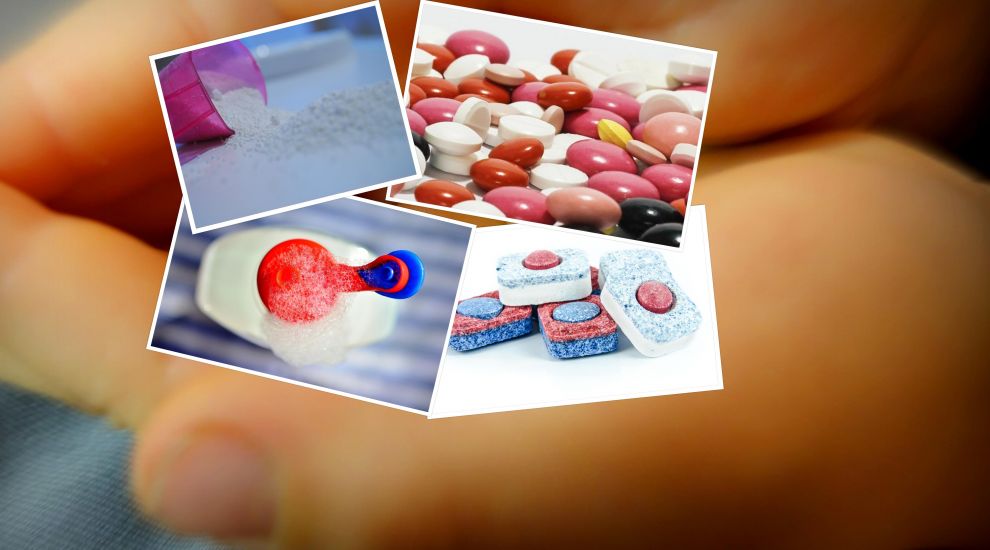

48 children, a third of them only a year old, were admitted to the A&E in 2017 after coming into contact with a harmful substance - 65% more than in 2016 - according to the latest report from Child Accident Prevention Jersey.
The incidents involved adult medication, household products, paint or washing detergent, among others, substances "children shouldn't get hold of" said Mandy Le Tensorer, Child Accident Prevention Jersey (CAPJ) Coordinator.
"Dishwasher tablets, toilet tablets, slug pellets and others should be out of children's reach. We all have busy lives and our mind in different places but I think it is all about not trusting your children. They may know they are not supposed to drink bleach but when left to their own devices they might decide a tea party and go look in the cupboard.
"We always encourage parents to put locks on the cupboard or a child-resistant catch. Products can also be put up high out of reach. Sometimes children get hold of products whilst in the bathroom so we suggest bringing them out."
In their annual report, CAPJ highlights the risks to children from unintentional injuries. In 2017, 2,809 children under the age of 13, attended A&E due to an unintentional injury. The figures show that boys are more likely than girls to have an accident at almost every age and amounted to 55% of visits. A vast majority of the accidents also happened in the spring or summer, when children are most likely to play outside.
Pictured: Figures show that boys are most likely to have an accident than girls, whatever their age.
Falls remain the most common cause of an injury requiring a visit to A&E, across all age groups. However, compared to 2016, there was a 41% drop in the number of children under the age of one needing to see the doctor following a fall, most likely from a raised surface. While this is a positive trend, Ms Le Tensorer says there is still work to be done as the majority of these falls were from raised surfaces and so, could have been avoided.
She said: "This is really good news because there is no real reason why a child under one should be on a raised surface. We always try to warn of the dangers of leaving a a child on a raised surface. Two feet might not seem much but it's a long way when you are small. Babies' heads are heavy so they go hard and young children have no instinct to put their hands out so they can get really hurt. I am pleased to see that go down."
62 children were treated for a burn or scald, five more than in 2016. A least a third of them were under the age of two, making this age group the most vulnerable to this type of injury.
Bites and stings accounted for 47 visits to hospital, with 16 children bitten by dogs, predominantly dogs known to them. Ms Le Tensorer was pleased to see that, even though a couple more dog bites occurred in 2017, the number of children over the age of six getting bitten has gone down. She said: "We do a 'Speak Dog & Stay Safe' campaign with children in Year 1 to teach them how to be safe with dogs. It's good to see it is working as in that age group the number of bites has gone down. We are now looking into ways to reduce those incidents for other age groups."
Pictured: A majority of dog bites involve a dog known to the child.
While the CAPJ wants to draw parents and carers' attention to unintentional accidents, Ms Le Tensorer says that not all of them can be avoided. "Children will have accidents. It is the nature of being a child to have accidents. I am in no way saying that we should bubble wrap them. In the contrary, they should be outside, playing, climbing. What I want to avoid is accidents where there is no benefit to them. As a child, you fall and you learn what to do to avoid the fall. Being burnt by a hot tea, there is no learning from that and you can have scars for life, emotionally and physically. It is the same for harmful substances.
"Some of the accidents should be avoided. We just try and remind people. We all have busy lives and are juggling different things. But simply moving your cup of tea from the front of the work surface to the back, which is a small thing, could have a really big difference."
Comments
Comments on this story express the views of the commentator only, not Bailiwick Publishing. We are unable to guarantee the accuracy of any of those comments.